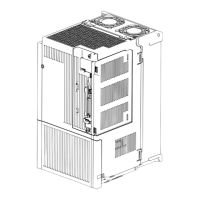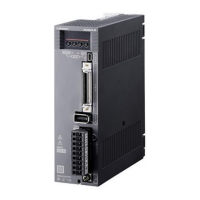3. SIGNALS AND WIRING
3 - 37
3.6 Detailed explanation of signals
3.6.1 Position control mode
POINT
Adjust the logic of a positioning module and command pulse as follows.
Q series/L series positioning module
Command pulse logic setting
Signal type
Q series/L series positioning
module Pr. 23 setting
MR-J4-_A_(-RJ) servo
amplifier
[Pr. PA13] setting
Positive logic Positive logic (_ _ 0 _)
Open-collector type
Negative logic Negative logic (_ _ 1 _)
Positive logic (Note) Negative logic (_ _ 1 _)
Differential line driver type
Negative logic (Note) Positive logic (_ _ 0 _)
Note.
For Q series and L series, the logic means N-side waveform. Therefore, reverse the input
pulse logic of the servo amplifier.
F series positioning module
Command pulse logic setting
Signal type
F series positioning module
(fixed)
MR-J4-_A_(-RJ) servo
amplifier
[Pr. PA13] setting
Open-collector
Differential line driver
Negative logic Negative logic (_ _ 1 _)
(1) Pulse train input
(a) Input pulse waveform selection
You can input command pulses in any of three different forms, and can choose positive or negative
logic. Set the command pulse train form in [Pr. PA13]. Refer to section 5.2.1 for details.
(b) Connection and waveform
1) Open-collector type
Connect as follows.
1.2 kΩ
Approx.
1.2 kΩ
Approx.
SD
Servo amplifier
OPC
PP
NP
DOCOM
24 V DC
(Note)
Note. Pulse train input interface is comprised of a photocoupler.
If a resistor is connected to the pulse train signal line, it may malfunction due to
reduction in current.

